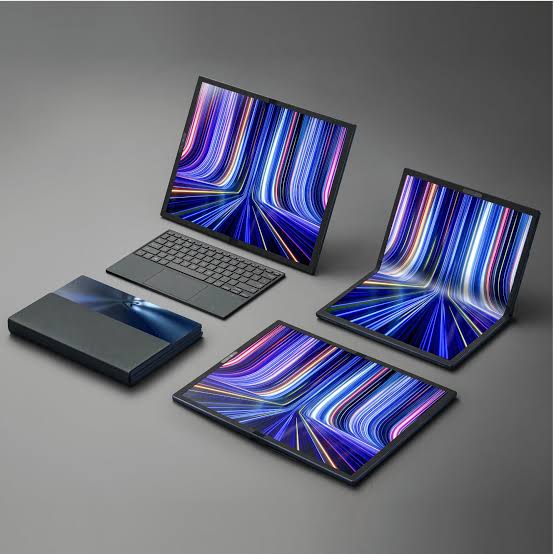Foldable and bendable laptops represent the next major evolution in personal computing, blending flexibility, portability, and high performance into a single device. While technical and cost challenges remain, advancements in materials science, battery technology, and display engineering are bringing this vision closer to reality.
The laptop industry is on the brink of a major transformation as foldable and bendable display technology moves from concept to practical application. With rapid advancements in flexible OLED panels, hinge engineering, and lightweight materials, manufacturers are reimagining what portable computing could look like in the coming years. This evolution promises not just sleeker designs, but entirely new ways of working, creating, and interacting with devices.
Emergence of Flexible Display Technology
Flexible OLED and AMOLED panels are at the core of foldable and bendable laptops. These displays use organic compounds that emit light when an electric current passes through them, allowing for thin, lightweight, and flexible screens without the need for rigid backlighting. Over the past few years, smartphone innovations have proven that foldable screens can be both durable and visually stunning. Now, the technology is being scaled up for larger devices like laptops, enabling designs that can fold into compact sizes or expand into multi-screen workstations.
Design Possibilities and Form Factors
Foldable and bendable laptops open the door to entirely new form factors. Instead of the traditional clamshell design, future models could feature seamless fold-out displays that double as tablets, tri-fold setups for multitasking, or rollable screens that expand horizontally or vertically. This versatility allows users to switch between modes depending on their needs, whether for gaming, professional work, or creative projects. Some concepts even integrate virtual keyboards or dual-screen touch interfaces, reducing reliance on traditional physical components.
Enhanced Portability and Space Efficiency
One of the most appealing benefits of foldable laptops is increased portability. A device with a 17-inch display could fold down to the size of a 13-inch laptop for easy transportation, making it more convenient for professionals, students, and travelers. The reduced weight and thickness also mean these devices could fit more comfortably into backpacks and small carry cases without sacrificing screen real estate.
Impact on Productivity and Multitasking
Larger, foldable displays give users more digital workspace, which is valuable for multitasking. Creative professionals could run multiple editing tools side by side, while business users could manage presentations, spreadsheets, and video calls simultaneously. Foldable designs may also allow for flexible screen partitioning, turning one device into a multi-monitor setup without additional hardware.
Durability and Technical Challenges
While the potential is exciting, there are significant challenges to overcome. Foldable displays require advanced hinge mechanisms that can withstand thousands of folds without degrading. Manufacturers also need to address issues like crease visibility, touch sensitivity across folds, and maintaining consistent color accuracy. Furthermore, these devices must balance flexibility with durability, ensuring they can handle daily use without compromising on performance.
Battery and Performance Considerations
Foldable laptops will need to manage power consumption carefully, especially with larger displays and more complex form factors. Efficient processors, optimized software, and energy-saving display technology will be essential. Innovations in battery design, such as flexible lithium-ion cells, could further enhance portability and runtime. High-performance models will need advanced cooling systems that adapt to different folding positions without adding bulk.
Market Outlook and Adoption Potential
Early foldable laptops, such as prototypes from Lenovo, Asus, and HP, have demonstrated the technology’s potential but remain expensive and niche. As production costs decrease and durability improves, adoption is expected to grow over the next five to seven years. Industry analysts predict that foldable and bendable laptops will initially appeal to high-end business users, tech enthusiasts, and creative professionals before becoming mainstream as prices fall.
Integration with Future Technologies
Foldable laptops could pair seamlessly with emerging technologies such as AI-powered productivity tools, 5G connectivity, and augmented reality integration. These combinations could make foldable devices central hubs for immersive collaboration, cloud-based computing, and creative design. For example, a foldable laptop could serve as both a standard computer and an AR controller, offering new possibilities for hybrid work environments.
Consumer Expectations and Design Trends
As consumers become accustomed to foldable devices through smartphones and tablets, expectations for laptop versatility will grow. Buyers will look for designs that balance innovation with practicality, offering smooth folding mechanisms, long battery life, and compatibility with existing accessories. Premium aesthetics, lightweight builds, and sustainability will also play a role in attracting environmentally conscious users.
